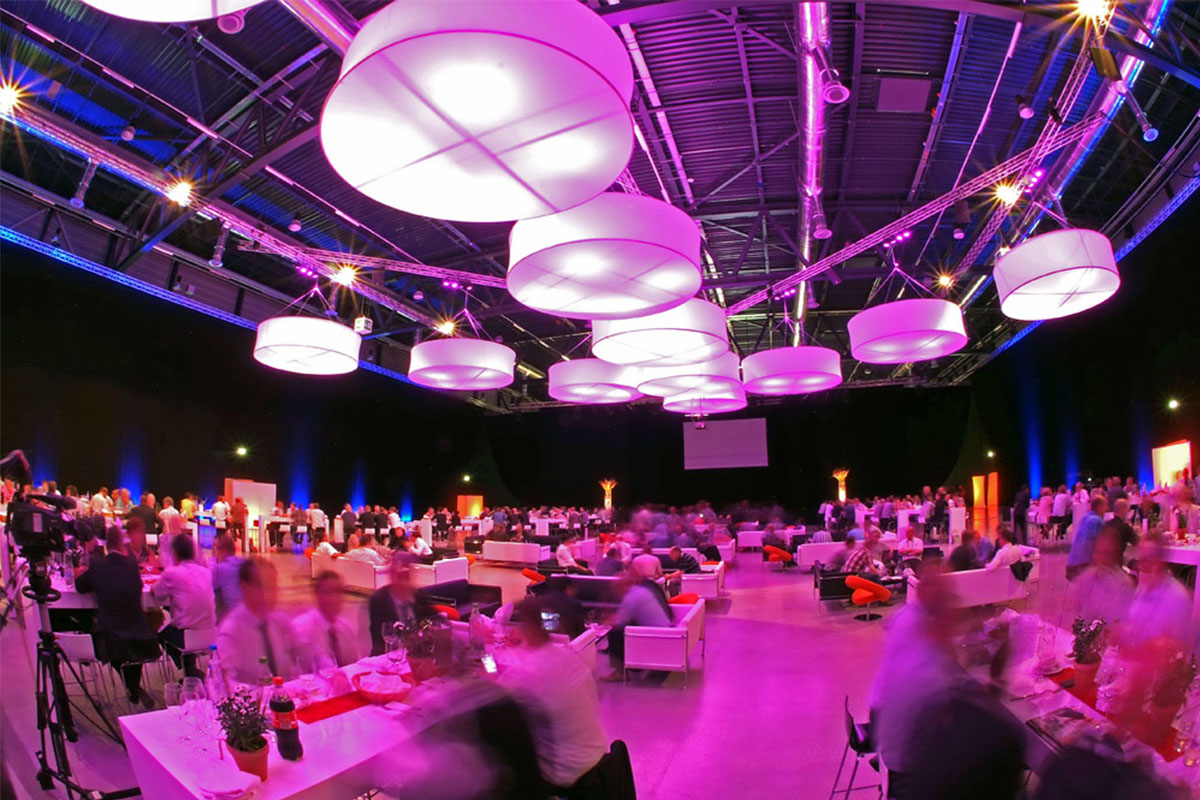Planning For The 6 Common Event Problems

Every experienced event planner can relate to the phrase “expect the worst and hope for the best.” The first step in being ready to deal with one of the many event planning problems that can occur, is to preemptively detect every problem that could occur. Then you can prepare your contingency plan to maximize the chances of a successful event.
Here are the six most common event planning problems and our tips for event planners to solve them.
1. Transportation problems
Transport is arguably one of the most crucial elements of a successful event; without transport, it’s pretty hard to get people to your event, and without people, it’s pretty hard to have a successful event!
Outside of attendance numbers, there are several other reasons why a good transport experience is central to your event’s success.
- Timelinessness – transport problems that cause arrival delays can create disruptions to your event schedule, impacting the overall flow of the event.
- Safety – transport plays a critical role in ensuring attendees arrive and depart safely from your event. Well-planned access routes can reduce the risk of accidents and sufficient public transport and taxi/ride share options can minimize people from driving under the influence.
- Attendee mood – a stressful journey to the event can mean your attendees arrive feeling disgruntled and frustrated, whereas a smooth and convenient arrival can put them in a more positive frame of mind, meaning they’ll be more likely to enjoy the rest of the event.
- Attendee satisfaction – as psychological studies show that people are more likely to remember things from the beginning or end of something (known as the primacy and recency effect), getting people in and out of your event smoothly and efficiently can have a huge impact on attendees’ overall satisfaction with the event (and what they tell others about it).
Ultimately, all of these things can reflect poorly on the reputation of your event and the event organizers. To avoid this, here are two event planner tips for transport problems.
Conduct a risk assessment to identify risks
Risk assessments are most effective when different members of your team and key stakeholders are involved, as unique perspectives can help surface and spot different things that could go wrong e.g.
Common transport issues
- Traffic jams
- Car accidents
- Attendees getting lost
- Bad weather
- Inadequate signage
- Poor crowd flow on exit from event
- Break-downs
- Inadequate parking
- Inadequate personnel
- Insufficient public transport
- Poor access/pick up for taxis/ride-share vehicles
Develop a risk management plan
Once you’ve identified all possible risks, developing a risk management plan that outlines how you will eliminate, reduce, or mitigate them will allow you to be on the front foot should they occur.
Some ideas include:
- Consider alternative routes or offer back-up modes of transportation.
- Maintain open communication with your transport partners (e.g. if you’ve hired a bus line).
- If you become aware of a major traffic jam or incident, you can postpone the keynote or main part of the event to later.
- Email attendees a reminder the day before or day of with the address, transport options and a map of the precise location.
- Send important traffic alerts to attendees via your event attendee app.
2. Attendance numbers
One of the biggest fears event organizers have is that nobody will show up (yep we’ve all had that nightmare the eve before the event). Equally, too many people showing up or failing to account for a shift in expected attendance numbers can be just as stressful.
Conducting thorough research (including data from your event management platform) can help to forecast attendance numbers as accurately as possible. However, as the unexpected can always happen, it’s essential to also plan for variations in numbers.
Tips to manage underattendance
- Include a last-minute promotion for tickets/registration in your final event comms.
- Consider redesigning the layout or seating. That way, you will create a more intimate setting and avoid having to cancel the event.
Tips to manage overattendance
- Monitor real-time sales online to keep track of how many people are coming to the event.
- Offer multiple check-in options. For example, EventsAir allows attendees to check-in at the event themselves via QR code, mobile app, kiosks or printed invitations. Learn more about EventsAir’s event check-in tools.
- Move the arrival time forward to stretch out the time available for check-ins and improve flow.
- Hire staff or volunteers to help guests register or find their seats.
- If possible, consider relocating the venue to a bigger space.
For a step-by-step guide on how to plan and research your next event, check out our guide to successful event planning
3. Technical problems
Even the most experienced event planners face technical issues and equipment malfunctions (with speakers, microphones, lights, wiring and laptops some of the main offenders). While people are generally pretty understanding and forgiving when these things happen, if they’re not quickly rectified, they can harm your reputation.
How to avoid technical problems at your event
To avoid this, it’s essential to:
- Take enough time to rehearse and test your tech and processes.
- Ensure everything is charged and you have redundancy and backup in your equipment.
- Create contingency plans. If anything does go wrong, communicate and apologize to your audience (don’t keep them in the dark, literally or figuratively). If the event is virtual, you can pre-prepare email comms that can be quickly distributed to attendees (learn how to add these to your event workflow with EventsAir).
- Review the technical support provided by your tech providers (e.g. EventsAir has 24/7 support for customers).
- If you don’t have your own in-house AV, partner with a trusted audio visual team.
If the event has to be cancelled, refunds may be necessary, so be sure your refund policy specifies what is and isn’t included.
READ NEXT: Staging a professional in-person, hybrid or virtual event
4. Staffing and volunteers
Staffing is a common event planning problem as, without a sufficient and capable team, the risk of something going wrong increases.
Common staffing problems:
- Understaffing – not having enough staff to handle the workload and number of attendees can lead to long lines, delays and a poor experience for attendees.
- Inadequately skilled/trained staff and volunteers – this can lead to confusion, mistakes, increased pressure on the more competent employees, and lack of consistency in the event execution. To avoid this, check out our post on how to source the best event staff.
- Ineffective allocation – this occurs when a lack of communication or organization leads to under or overstaffing in some areas or an uneven distribution of workload.
- Sickness and no shows – after the enforced isolation periods for covid-19, every event planner knows the havoc in staffing that sick or absent employees can cause.
Considerations for staffing and volunteers
To address these issues and optimize staffing, here are several event planning considerations:
- Properly assess staffing needs – use your event management platform to conduct a thorough assessment of the event’s needs, venue size, and expected attendees to determine the appropriate number of staff. Monitor registrations all the way up until the event date and adjust staffing and volunteers as needed.
- Provide proper training – staff members should be adequately trained on the tasks they are expected to perform, given clear instructions for responding to different scenarios that may arise, and be aware that in busier times they may have to work faster or call for more help.
- Over- rather than under-staff – to control for the possibility that staff and volunteers might not show up or perform at the expected level, it’s always a good idea to roster more people on than you need and overstaff important stations/roles. Volunteer shifts can always be ended early and paid staff’s shifts can be varied as-needed (just be sure you are giving them the minimum legal required hours and enough notice).
- Improve communication and organization – clear communication with staff using rosters that give staff enough notice, shift reminders, and event briefings can help to minimize issues and no-shows. Close collaboration with your team and department heads can help create alignment in staffing decisions.
- Have a backup plan: Even with proper planning, unexpected staffing issues can arise. Back-up plans, such as an on-call list of staff members who can be called upon if needed, can help manage this risk.
5. Participant dropouts
When lead speakers or VIP participants are unable to attend for whatever reason, it can create challenges for event organizers, but there are several options that can help mitigate the impact. Here are a few possibilities:
- Monitor travel arrangements – using your event’s platform to record and keep track of your VIP’s travel arrangements makes it easy to monitor potential changes or issues like flight delays.
- Back-ups/replacements – get as much information as possible from VIP participants, such as their speeches and slides, so that someone else can read or deliver in their place if necessary. It may be possible to find another person on the schedule to fill their shoes, or you could ask the speaker if they can provide someone in their stead.
- Reformat the agenda – it may be necessary to adjust the schedule or format of the event to accommodate participant changes. For example, if a speaker cannot attend, you could schedule additional breakout sessions or workshops to fill the time.
- Virtual participation – If the speaker or participant is unable to attend in person, they may still be able to participate virtually through video conferencing or a hybrid event solution.
- Pre-record content – if the speaker or participant is unable to attend in-person or virtually, it may be possible for them to pre-record their presentation or interview ahead of time that can be played to the audience as a video.
6. Weather
Weather can have a significant impact not only on outdoor events, but also on indoor ones when there is a flow-on effect from transport impacts or attendance numbers. Fortunately, there are ways to mitigate the impact of inclement weather and ensure that the event runs as smoothly as possible.
- Plan wet weather alternatives such as overhead covers, large tents, gazebos, or switching to an indoor venue. Having umbrellas on hands for guests to get from their transport to the indoor area is also a nice option, if possible.
- Track the weather forecast closely and make alternative arrangements early if necessary.
- Consider rescheduling the event for another day or switching to an online event.
- If hot weather is the issue, use cooling solutions such as misters, fans, and extra water for guests.
- Communicate clearly with guests about the event status and any changes or cancellations that may be necessary.
- Offer refunds if the event must be cancelled due to weather.
The bottom line
Planning a big event is stressful enough even when everything goes right. Unfortunately, things happen, and whether it is bad weather, a traffic jam, a power outage, low attendance, or participant dropouts, you can never be too prepared.
To plan an event successfully, always think ahead and figure out both the event planning problems and solution(s) before the problem even occurs. Take enough time to rehearse and communicate with all staff members and guests. And if you have some uncertainties or you need help with event planning, feel free to contact us.
EventsAir has been at the forefront of Event Technology and Innovation for over 30 years, continually pushing the boundaries of what an event management platform can do. Built by event planners for event planners, EventsAir is a secure, scalable, cloud-based solution that can manage everything from in-person, virtual to hybrid conferences, meetings and events in a single online platform – anywhere, anytime and on any device. In use in over 50 countries by multi-national corporations, professional conference organizers, government departments and tertiary education institutions, EventsAir is also used in global congresses such as G20, APEC, CHOGM and ASEAN, as well as sporting events like The Olympic Games, World Rugby, Commonwealth Games and Pan Am Games. EventsAir is trusted by event professionals around the globe. For further information, get a demo.




